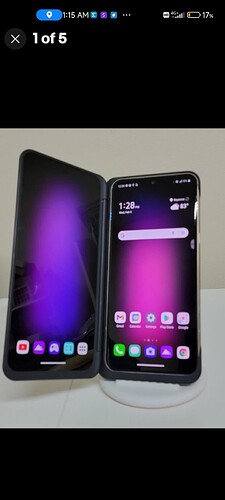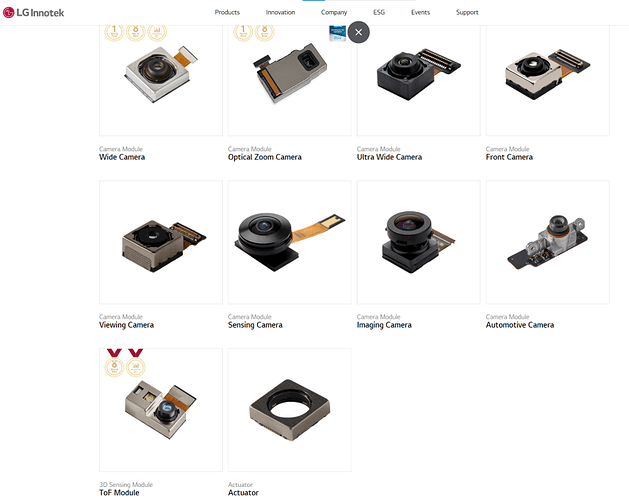Almost the same as my wishlist for the “5” and what I hope Fairphone and the rest of the repairable smartphone industry will work towards as a whole (with updates & additions):
1. LTPO OLED or LTPS microLED LCD variable refresh display (idle refresh rates as low as 1-10hz to preserve battery life & display longevity)
Variable refresh rates ultra-low refresh rates on LTPO displays should preserve the longevity of pixels even further. Hopefully the “Fairphone 5+” or “Fairphone 6” sports some kind of variable-refresh LTPO OLED or miniLED IPS display in the coming years.
2. Telephoto Camera Module or LIDAR sensor to replace the wide angle camera.
I just think it would be a super neat have the option to replace the wide-angle camera module by swapping in a 3X or 10X telephoto module since I find myself using it pretty frequently during outdoor adventures and traveling.
LIDAR sensors are also becoming more common on recent iPad Pro and iPhone Pro Max models as well as so a swappable LIDAR module would be useful for those of us doing 3D & spatial data capture for spatial representation, simulation, game development, and other work related to 3D data visualization.
Even more specialized camera modules like an infrared sensor for “x-ray/thermal vision”, an ultra compact multi-spectral red + blue + green + near-infrared sensor suite module (as currently found as a payload option in drones), “mantis shrimp vision” (interpreted UV & multi-axis ultrawide dynamic range polarized light sensor) would be really cool offerings as well, but those seem like uber distant stretch goals at the moment.
The array of standardized camera modules from LG Innotek are a good example of this:
https://youtube.com/clip/Ugkx7BXGYsLOcApAVwUcvF1-xycVkwj4WCLr?si=7uVHsMiLwgkLhEmN
https://youtube.com/clip/UgkxtwaqxpTMH0nPuKFC-b_9DeKIl1GVCN9d?si=HcImiHbNXTNfdrmX
3. Interchangeable Core/Compute Module Upgrade ~ this is something I hope Fairphone is taking cues from their modular-repairable laptop cousins at Framework. The main value proposition here is to have the option to conveniently swap in a core module that contains a higher performance CPU/SoC (i.e. Qualcomm Snapdragon 7 Gen3 or Mediatek Dimensity 8200/9200) as well as potentially more gigs of RAM & on-board storage.
An example of this might look like swapping out the Snapdragon QCM6490 (a slightly modified Snapdragon 778G+), 8GB of LPDDR5 RAM, and 256GB of UFS 3.1 storage to an upgrade module containing a Dimensity 9200, 16GB of LPDDR5X RAM, and 1TB of UFS 4.0 storage. The original core module could then either be kept by the owner as a spare or sent back to Fairphone to upcycle into refurbished devices or ethically eRecycled if beyond repair.
I’m aware that replacement core modules have not been sold on the open market for any Fairphone model so far, but doing so would be a huge step in the progress to make modular repairability more accessible.
4. Expandable Form Factor: Fold n’ Roll?
Probably not in the “Fairphone 6” (2025?) but maybe the “7” (2027) and hopefully the “8” (2029). I imagine major improvements in battery technology like mass market availability of solid-state cells --allowing either the same internal volume/thickness allocation for 2-3X the capacity or 33% to 66% less internal space allocation (power cells that are half as thick) – as well as noticeably more durable ‘ultra-thin glass’ and further optimizations to hinge designs and more compact display-extending motors to enable such a form-factor while maintaining a sub-$1000 price point in a base configuration SKU with such features.
.
5. “Build Your Own Fairphone” is another Framework-inspired solution that’s worth considering to realize in a future model.
This stems from the idea that a higher level of customization can be afforded to tech-saavy customers at a similar or reduced cost if the final assembly of the device (phone, tablet, foldable, laptop, etc.) is done by the purchasing individual instead of workers on an assembly line thus both providing both a fun & satisfying activity as well as reducing labor-relate costs since the components are sent directly to the customer.
Dual-USB4 or USB4 + 3.5mm headphone jack chassis anyone?
6. Finally I would like to pitch the idea of forming some sort of hardware standards consortium between repairability-focused OEMs like Fairphone, Framework, Teracube, Shift Phone, smartphone ODMs (Wingtech, Huaqin, Longcheer), and laptop ODMs (Tongfang, Clevo, Compal, Quanta, Wishtron, Inventec) in an effort to establish some degree of interchangeability of parts in between different models and platforms a bit like desktops and hopefully modular laptops too.
I believe this can be realized in smartphones because large phone brands already use nearly-identical components in between their various lineups of devices. Some examples include BBK Electronics which sources very similarly-specced parts in between their Oppo, Vivo, and Oneplus subsidiary brands or how Pocophone devices are mostly rebadged Xiaomi or Redmi phones with a few hardware tweaks & custom Android skins. Cuz almost every phone model from all six brands were designed to specification by the same three Shanghai-based companies.
Another great example is the Eluktronics MAG-15, Schenker XMG Fusion 15, and Maingear Element. All three laptop moldels offered by three different brands sport near identical configuraions of display, CPU, GPU, battery capacity, I/O port layout, cooling solution, and guess what? They’re all based on the same Tongfang design.
What I’m trying to get at is that since the design and individual components between devices are already configured so similarly then eatablising standards between brands for things like camera module housings, connectors between components, and firmware would enable customers to swap certain types of parts
– say cameras, batteries, core modules, and USB-C ports – between models offered by Fairphone, Shift Phone, Teracube, and other brands that decide to integrate such hardware standards into their designs.
I imagine displays, chassis, and rear covers still wouldn’t be interchangeable since brands would still prefer to be able to design unique phones in all different ranges of size, look, and feel.
More about Original Design Manufacturers (ODMs):
• List of laptop brands and manufacturers - Wikipedia
• https://omdia.tech.informa.com/-/media/tech/omdia/whitepapers/handset-odm-industry-white-paper.pdf
• Reflections about rebranded and unbranded electronics | Random thoughts, conocimiento no conocido, yachay mana yachasqachu
I hope my thoughts and explanations help form visualizations of what’s possible in the current resurgence of endomodularity – as opposed to Phoneblocks and Project ARA which exibited exomodularity. 





